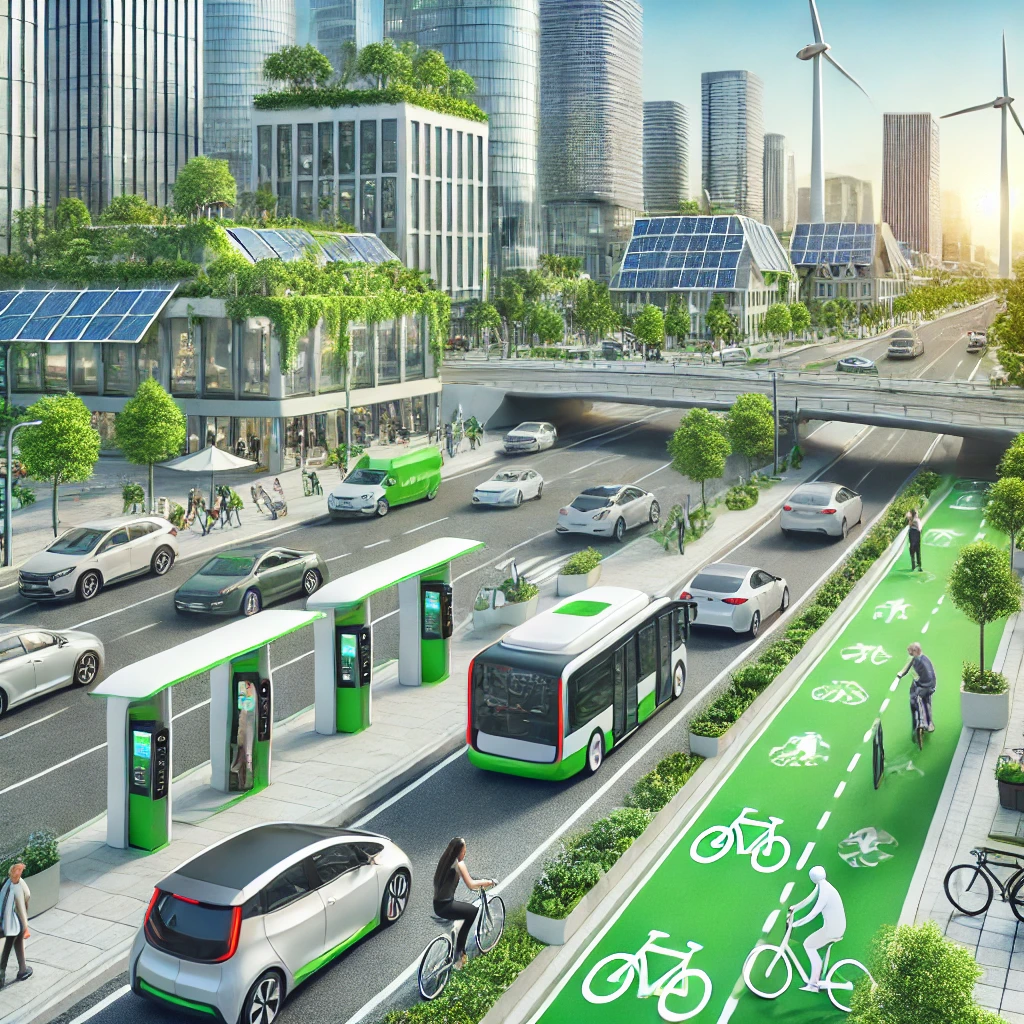It is within the transport sector that one finds one of the largest contributors to greenhouse gas emissions globally, while it is also here that some of the most promising innovations are happening, such as shared mobility. In particular, car-sharing seems like a bright idea for truly sustainable transportation. Indeed, giving access to cars without ownership, platforms such as https://getmancar.com/ show just how shared mobility makes for greener travel. This article looks at the wider environmental benefits of car-sharing and its correspondence with current trends in sustainable travel.
Car-Sharing: What Is It, How Does It Work?
Carsharing provides access for short-term rentals by the hour or day, either through a membership-based service or app-driven. This system focuses more on access rather than ownership, with increased efficiency to be wrought from the pooling of vehicles.
Key features of carsharing include:
- Convenience: The cars can be picked up from different locations and returned there.
- Cost-Effective: The users pay only for the time and distance driven.
- Sustainability: Shared mobility reduces ownership of private cars, hence is green.
Car-Sharing: Ecological Benefits
1. Greenhouse Gas Emission Reduction
Carsharing services contribute to a big decline in greenhouse gas emissions because the usage of fewer cars is encouraged. According to several studies, every shared car replaces around 7 to 11 privately owned vehicles. Downsizing in the number of cars leads to lesser vehicles on the road and lowered fuel consumption, hence the level of carbon emissions lowers down.
2. Reduced Resource Usage
Car manufacturing is a resource-intensive process involving steel, plastics, and rare minerals. By reducing the demand to own cars, carsharing minimizes the resources required in manufacturing and lowers the environmental footprint of transportation systems.
3. Increased Adoption of Efficient Vehicles
Most car-sharing fleets are composed of either a hybrid mix or fully electric vehicles. These energy-friendly car models consume less fuel and lead to lower levels of emission, hence concurring with the global ideals on sustainable development.
How Car-Sharing Promotes Sustainable Urban Travel
Shared mobility not only minimizes environmental harm but also reshapes urban travel patterns in a sustainable manner:
- Reduced Congestion: Fewer cars on the road mean less congestion; time taken to drive to and from work will be less.
- Optimized Land Use: Shared mobility requires fewer parking spaces, freeing up urban land for green spaces or pedestrian zones.
- Behavioral Changes: Car-sharing forces people to combine trips or even use public transportation and, for shorter distances, cycling—which reduces their dependency on private vehicles.
Environmental Metrics: Private Ownership versus Carsharing
| Aspect | Private Car Ownership | Carsharing |
|---|---|---|
| Carbon Emissions | High (idle vehicles still pollute) | Reduced (fewer cars used more efficiently) |
| Vehicle Utilization Rate | Low—there are 95% when the vehicles are idle or not in use. | High—shared cars are in good use. |
| Land Use | Intense parking requirements | Extremely minimal parking infrastructure |
| Resource Use (materials for individual cars) | High | Lower—shared vehicle fleets |
Aligning with Sustainable Travel Trends
1. Integration with Public Transportation
Carsharing helps improve transport systems by offering "first-mile" or "last-mile" solutions for the commute. For example, traveling from transit hubs to furthermost destinations using shared-car rentals is convenient. Seemingly, it decreases personal car ownership and facilitates more efficient movement within cities.
2. Promoting Multi-Modal Transportation
Car-sharing apps today often team up with services for bike-sharing and rentals of e-scooters, along with ride-hailing services, for multimodal travel options. The trend helps minimize the ecological impact of short trips by providing users with greater convenience.
Social and Environmental Ripple Effects
1. Improved Air Quality
By decreasing the number of vehicles on the road, carsharing helps reduce the air pollutants like nitrogen oxides and particulate matter 2.5. And thereby, cleaner air ensures good health for urban residents.
2. Encouraging Sustainable Habits
Carsharing carries an ecocentric mentality within the minds of its patrons. In fact, one study recorded the correlation of how carsharing introduction correlates with switching to public transportation modes for commuting or active forms of traveling, such as biking and walking.
3. Supporting Renewable Energy Adoption
Just with other mobility aspects, shared mobility now brings a shift toward renewable energy transportation in EVs now that they are becoming significant in car-sharing fleets as well.
Car-Sharing in a Green Economy: The Future
1. Integration of Technology
Innovations such as AI-enabled fleet management and real-time booking apps are making carsharing more accessible and more efficient, therefore encouraging wider use.
2. Expanding into Underserved Markets
While there was a beginning to car-sharing's addressing the needs of both rural and suburban communities through reducing car dependency in locales with limited public transit.
3. Collaboration with Governments
Public-private partnership is very important in the integration of shared mobility into smart city plans. Shared mobility policies, like reduced parking fees for car-sharing vehicles, provide incentives to attract more people to using it.
FAQs
What are the most important ecological benefits of car-sharing?
Carsharing reduces greenhouse gas emissions, minimizes resource use, and encourages the adoption of energy-efficient vehicles. It also supports reduced traffic congestion and improved air quality.
How does carsharing contribute to sustainable travel?
Carsharing also helps to travel more sustainably through the integration with public transportation, multi-modal travel, and a reduction in dependence on private cars.
Is car-sharing any greener than car ownership?
Yes, carsharing reduces the number of vehicles needed on the road, which reduces emissions, resource consumption, and urban land used for parking.
How does car-sharing affect public transportation?
Carsharing supplements public transportation in that it provides handy solutions to the first-mile and last-mile problems, allowing users to make smooth, multimediated journeys.
Are electric vehicles (EVs) common in carsharing services?
Yes, many carsharing fleets have EVs to reduce emissions even further and support the shift toward renewable energy taking place around the world.
Can carsharing work in rural areas?
Less common in rural areas, more and more carsharing services are cropping up to handle those specific needs by offering mobility when public transit options don't work out.
Conclusion
Carsharing is one of the potential revolutionary methods that may reduce environmental impairments in transport and answer modern global trends of increasing sustainability. By decreasing the consumption of cars, renewing energy within cars themselves, and promoting carspaces to be shared within metropolis centers, car sharing might illustrate how emerging mobile nodes facilitate a green roadmap to sustainable mobility.
Be that a commercial car-sharing hub such as GetManCar or by government-private collaboration—carsharing paves the cause towards a sustainable future road transport system for human individuals and nature.





